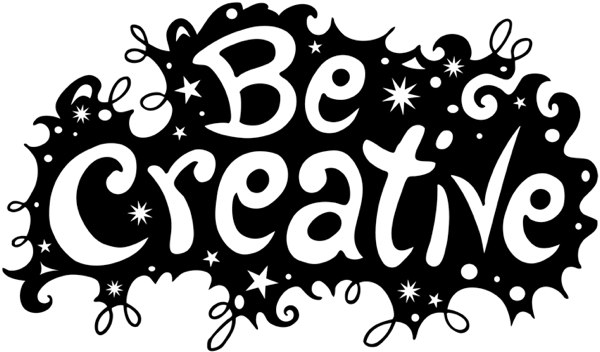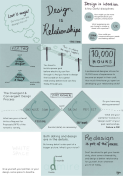There is a bit of a conundrum going on in the creative professional community. The problem? The Internet is seemingly cheapening the efforts of high-profile designers, programmers, and other similar jobs on the Web. It’s a global issue, and it is likely only to get worse!
What really sparked this controversy is
another recent controversy that surrounded the historic and memorable GAP logo. The company had decided to change its brand and identity with a refresh of its logo. But it was a disaster and nothing more. The logo failed to impress anyone, and even I was shocked at how poorly it was executed. But I wasn’t the only one that noticed.
The whole Internet seemingly took notice, and even people who would not typically be interested in this type of discussion jumped in to voice their opinion about the disgust of the change. Clearly, Gap had made a huge mistake, which the company acknowledged.
Rightfully, Gap had intended to go back to the drawing board, and they did. So the crisis was averted, right? No… not quite.
Things got even more chaotic after Gap stated that
they would hold a contest on their Facebook account, where they asked users to
submit logo ideas and designs. This is a task normally handled by a professional in brand identity, who would do the necessary research and brainstorming with the company to design a brand identity that would be suited for the company. These designers take pride in their work, and they expect to be compensated for it as well. But the route that Gap was taking would avoid them altogether — the creative community took notice.

There was an immediate uproar from the design community about Gap’s attempt to forego the traditional process from which developing a brand identity is usually done. This is actually quite common on some websites, where people bid or simply submit logo designs for a client and then the client chooses the winner and pays for the rights to the logo. Admittedly, this might be great for a small business who simply can’t invest the time and resources into hiring a designer to do the job, but that alone still creates controversy from the design community.
Regardless, Gap is not a small or even medium sized business. Gap is a huge corporation with stores around the globe. Surely they can afford to hire a professional to do the work. But they didn’t. And it appears that the design community took that as a slap in the face. Not only because it seemingly discredits the efforts of professional designers, but that could have set a trend where other large companies opt to forego the design process altogether.
Worldwide Competition (aka Outsourcing)
There is no beating around the bush on this issue: the whole design contest thing seems to stem from those attempting to capitalize on outsourcing. Many designers, who are great in their own right, originate from countries like India, Singapore, and other developing countries. They are willing to do design work for much cheaper than what you might expect in other countries in the Americas and Europe. So many companies opt to go that route. And I’m sure they will continue to do so in greater amounts.
So how will designers cope with these trends? Will designers be forced to lower rates and work for less because of the increase in global competition? Will they, too, be forced to compete for work without necessarily being compensated for their efforts in design competitions? Will they simply forge ahead and continue the grind?
I can’t answer these questions, because I am not a designer. I am merely one who appreciates good design and enjoys it as a hobby. But I can’t even begin to imagine what thoughts would be going through my mind if freelance design was my career choice. It seems like things are bound to get tougher, as competition increases and access to that competition becomes more apparent through Internet services.

But this is a potential issue for all creative professionals. Web designers must compete with open source platforms that continue to grow more powerful and easier to install with increasing options in themes and designs being distributed for free. Visual effects and motion graphic artists must compete with the worldwide interest in the arts, where those without college education and with plenty of time on their hands can create work comparable to those with the best education money can buy. Music production studios can be created for a few hundred dollars, instead of the thousands it used to require a decade ago. Skills can be acquired, as long as the determination and drive is there.
So those who have been in the creative industry for years might need to accept that things are changing. And it is mostly in part because now everyone is facing worldwide competition; the Internet is the largest contributing factor to these developments. The playing field continues to level out. And while I have faith that many will be able to adjust, I’m sure that there will be many who won’t.
Have you got a story about how the design industry is being cheapened by the internet? Share it with everyone in our comments section.
 There was an immediate uproar from the design community about Gap’s attempt to forego the traditional process from which developing a brand identity is usually done. This is actually quite common on some websites, where people bid or simply submit logo designs for a client and then the client chooses the winner and pays for the rights to the logo. Admittedly, this might be great for a small business who simply can’t invest the time and resources into hiring a designer to do the job, but that alone still creates controversy from the design community.
Regardless, Gap is not a small or even medium sized business. Gap is a huge corporation with stores around the globe. Surely they can afford to hire a professional to do the work. But they didn’t. And it appears that the design community took that as a slap in the face. Not only because it seemingly discredits the efforts of professional designers, but that could have set a trend where other large companies opt to forego the design process altogether.
There was an immediate uproar from the design community about Gap’s attempt to forego the traditional process from which developing a brand identity is usually done. This is actually quite common on some websites, where people bid or simply submit logo designs for a client and then the client chooses the winner and pays for the rights to the logo. Admittedly, this might be great for a small business who simply can’t invest the time and resources into hiring a designer to do the job, but that alone still creates controversy from the design community.
Regardless, Gap is not a small or even medium sized business. Gap is a huge corporation with stores around the globe. Surely they can afford to hire a professional to do the work. But they didn’t. And it appears that the design community took that as a slap in the face. Not only because it seemingly discredits the efforts of professional designers, but that could have set a trend where other large companies opt to forego the design process altogether.
 But this is a potential issue for all creative professionals. Web designers must compete with open source platforms that continue to grow more powerful and easier to install with increasing options in themes and designs being distributed for free. Visual effects and motion graphic artists must compete with the worldwide interest in the arts, where those without college education and with plenty of time on their hands can create work comparable to those with the best education money can buy. Music production studios can be created for a few hundred dollars, instead of the thousands it used to require a decade ago. Skills can be acquired, as long as the determination and drive is there.
So those who have been in the creative industry for years might need to accept that things are changing. And it is mostly in part because now everyone is facing worldwide competition; the Internet is the largest contributing factor to these developments. The playing field continues to level out. And while I have faith that many will be able to adjust, I’m sure that there will be many who won’t.
Have you got a story about how the design industry is being cheapened by the internet? Share it with everyone in our comments section.
But this is a potential issue for all creative professionals. Web designers must compete with open source platforms that continue to grow more powerful and easier to install with increasing options in themes and designs being distributed for free. Visual effects and motion graphic artists must compete with the worldwide interest in the arts, where those without college education and with plenty of time on their hands can create work comparable to those with the best education money can buy. Music production studios can be created for a few hundred dollars, instead of the thousands it used to require a decade ago. Skills can be acquired, as long as the determination and drive is there.
So those who have been in the creative industry for years might need to accept that things are changing. And it is mostly in part because now everyone is facing worldwide competition; the Internet is the largest contributing factor to these developments. The playing field continues to level out. And while I have faith that many will be able to adjust, I’m sure that there will be many who won’t.
Have you got a story about how the design industry is being cheapened by the internet? Share it with everyone in our comments section. 




12 User Comments
Unmotivated Genius
I think I have the answer for your worldwide outsourcing question, with more questions. I would love to say that cream always rises to the top and established design firms will win out but I simply don’t think it will. What if the growth of the internet and more worldwide connections will led to a wal-mart effect in our industry? I find more and more users buying cheap code/design that’s functional for the time being and to the common consumer good enough to pass their myopic eye test. How do you find them? By being the person who speaks their language and can actually fix the problems outsourcing created for them. Long story short, the market is flooded with cheap “design firms” and with so many people looking to streamline the process outsourcing will continue and its only when you find out that you get what you pay for, will people look to established firms, especially in the US and western Europe. But if that’s the case why has wal-mart grown so much?
Chris
This isn’t unique to designers. Ask the textile workers, or the auto workers, or the programmers whose jobs have gone to cheaper places. The solution here is not to bemoan the fact that someone can do a “good enough” job for less, the solution is to get off your duff and COMPETE! Use your skill, use your experience, use your proximity to the customer, use your insight. Seems to me that if The Gap determined that they could get away with a design competition, then the real problem is that their existing (and potential) graphic designers didn’t do a good enough job of showing their value proposition.
Wil
The trend is moving toward a deterioration in meaningful branding and image development. Corporations are trading quality for cheap ideas and this new approach is undermining the value of comprehensive design where professionals have skills that have developed for years or decades to understand their client’s needs. Good design is understanding your client, understanding their marketing objectives, their goals, their industry, and tailoring a design that meets their criteria; a design that fits with their overall communication strategy. A fly by night person can’t do that. In the long run, we see an unraveling of brand integrity and strength that had taken years to build. So it’s not all sugar and spice as these corporations believe. There will be blowback because this flagrant disregard for true professional web, print and multimedia designers and photographers is going to hurt them in the end.
Great article James.
tydunitz
Largely, James, you’re right: design competitions are always a terrible thing for everyone involved (except the client). That said, as an illustrator and designer, I very rarely feel threatened by, for instance, how easy it is for Johnny Regular to install Photoshop – that he installed it doesn’t mean he knows the first thing about using it. Thankfully, design still requires that you know the laws of composition and aesthetic before you can make anything half-decent. This alone will pretty much guarantee for all time that there will always be a need for the real deal (me, etc.). Getting paid what we’re worth is another story entirely.
Laura
Good points made, however I would argue that even the client gets ripped-off because the work they get is well below par – the fact that they are paying well below industry average though serves them right!
And I’m sure that quite a few of the companies that have tried crowd-sourcing have realised the error of their ways and returned to using a real professional – which supports your point about installing programs vs design knowledge. It still takes an education (self-taught or otherwise) and years of practice to become a designer, not a copy of Photoshop.
J. Jeffryes
Design contests are a threat to two things:
1. low-talent graphic artists (not designers)
2. outmoded business models (charging $10 million for a logo)
If a business can get solid ROI from branding done by random people working for free, then the idea that professionals can charge top dollar for the same work was always an illusion.
If hiring a talented professional has a higher ROI, then those talented professionals have nothing to fear.